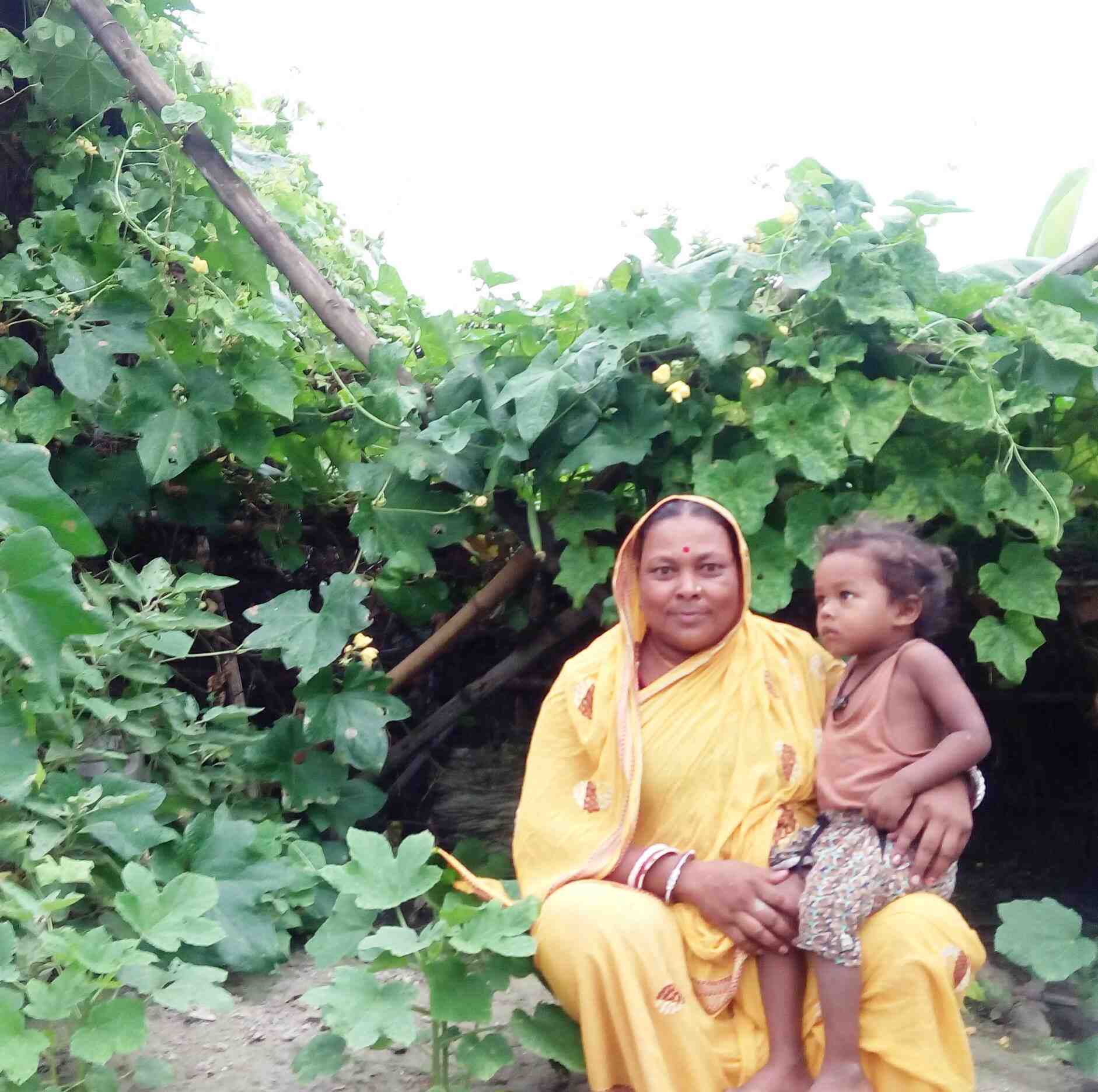To learn more about Digital Green’s AI-powered platform and how it impacts small-scale farmers in India, Ethiopia, Kenya, Nigeria and Nepal, we encourage you to sign up for our newsletter.
Videos Show a New Way of Life

Manju Devi, a resident of Ababkarpur village in Mahua block of Vaishali. She works as an agricultural labourer and is the main source of income for her family of eight, that includes three grandchildren of ages 2 to 4 years. She is also a member of Pooja Jeevika Self Help Group.
A large portion of my income used to be spent on vegetables. Almost 50-60 INR was spent daily at the haat (rural /village market). Another concern was the expenditure on the health of the children, shared Manju Devi.
Things turned around for her, however, after watching a video on Sack farming in the month of December 2015. The dissemination by Sudhir Kumar, a village resource person (VRP) trained by Digital Green got Manju Devi thinking and she was excited by the prospect of replicating the same in her backyard.

With great enthusiasm, Manju Devi asked Sudhir to help her in replicating this practice in her backyard, but it was an unsuccessful attempt. However, she did not let this prove to be a dampener to her determination, she was sure that this will definitely help her in saving a good amount of money; she tried it again and was successful. Manju Devi is now the proud owner of six sacks in her backyard with cucumber, snake gourd, ridge gourd, bitter gourd, and seam.
Maju Devi is very happy with the ease of adopting sack farming. The method only required a small amount of space, she shared. The vegetable produced is more nutritious because no chemical fertilizers or spray is used. Growing corps inside a sack boost yield as she got 10 kgs of snake gourd in a day and 1 kg of Seam (bean) in an interval of 2-3 days. She even distributed the surplus to her neighbours. Sack farming involves filling bags with soil, manure, and pebbles for drainage, and growing plants on the top and in the holes on the sides. The sacks allowed her to grow different vegetables in places with limited access to land and water. Inspired by other videos on Ladyfinger, Tomatoes, and Chillies, she has also planted these below the creepers. Manju Devi is using only Brahmastra as an organic insect repellent, having learnt how to make it from another video.
It been over six months since she bought any vegetables from the haat (village market). Sack farming has saved me a great deal, as money that would have been used to buy vegetables can now be used to buy milk and attend to the medical needs of my grandchildren, shared Manju Devi. This has also helped her to avoid borrowing money in times of emergency from her neighbours, often at a very high interest rate.
Manju Devi believes that knowledge of new techniques through videos is a great method of educating the rural mass. Knowledge like this can transform the lives of the poor. Manju Devi is now motivating other small and marginal farmers to think differently and adopt practices she has seen in the videos.